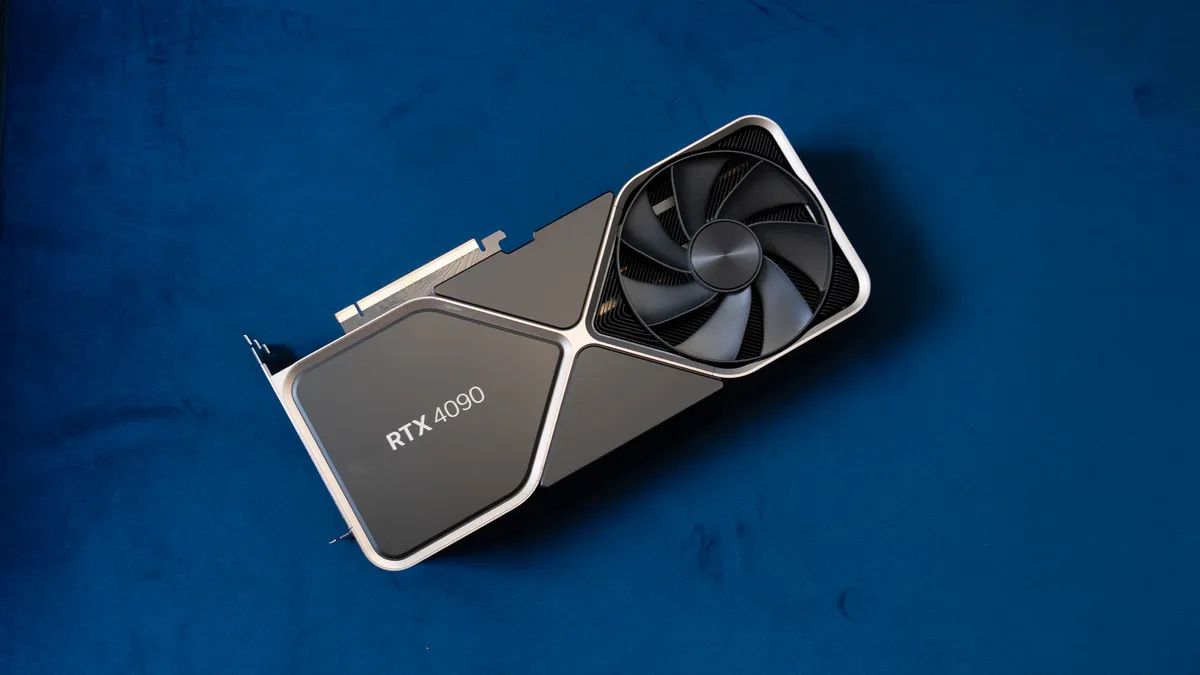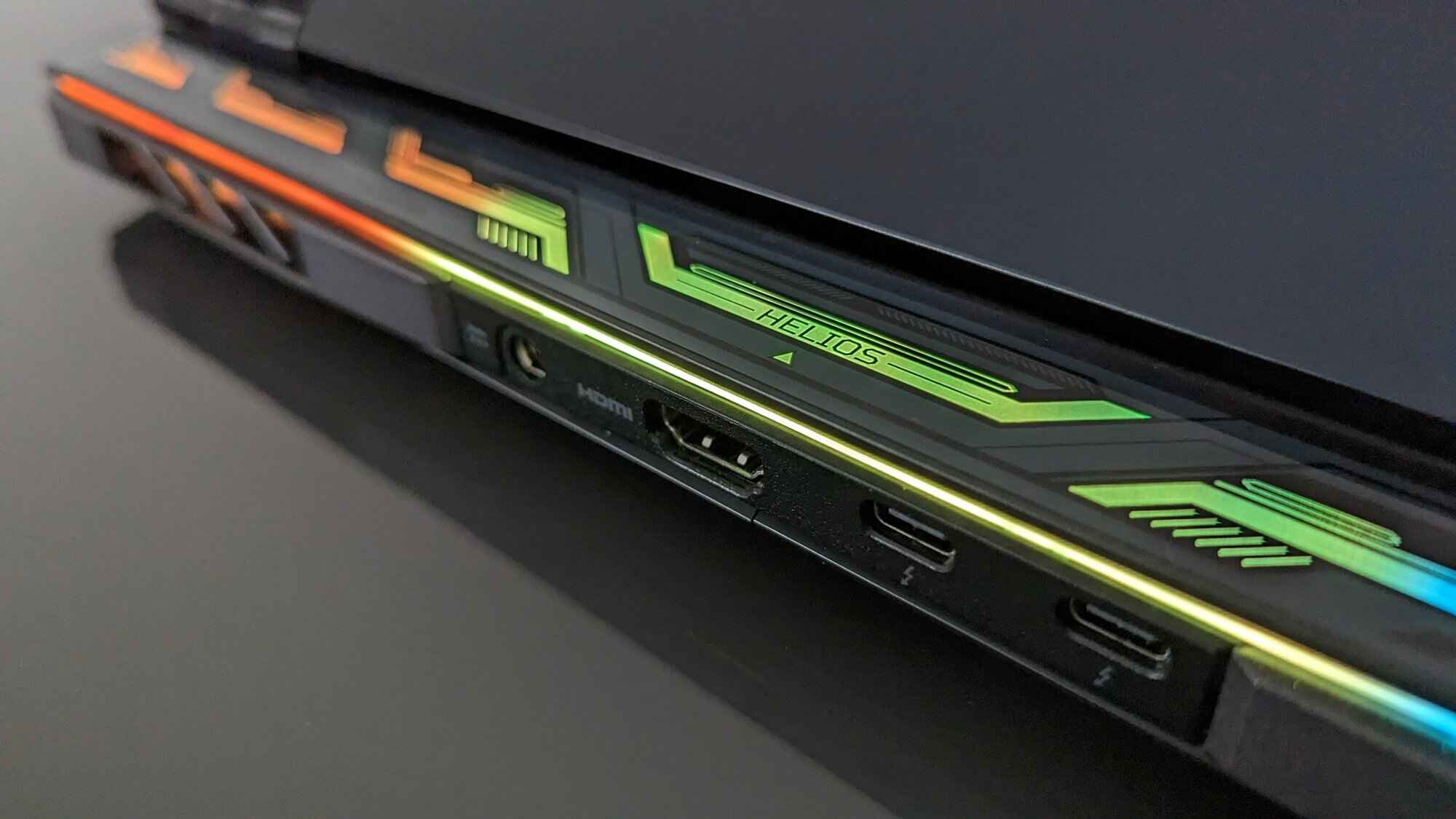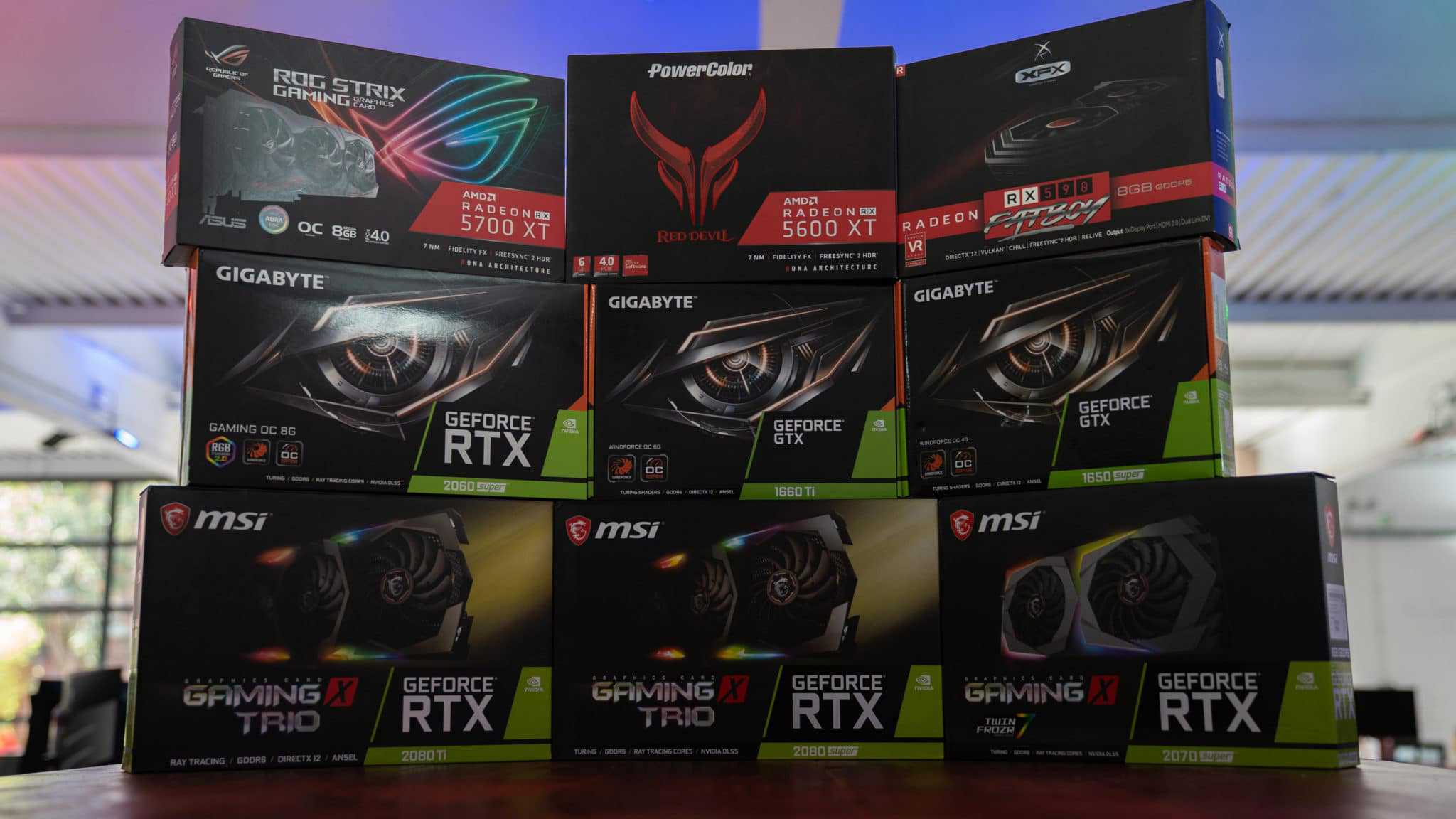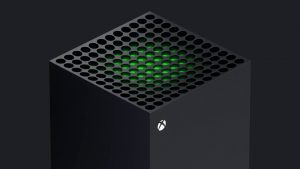Introduction
Graphics Processing Units (GPUs) play a crucial role in modern computer systems, particularly when it comes to intensive graphic rendering and advanced computational tasks. They are a key component in gaming laptops, high-performance workstations, and even data centers powering artificial intelligence algorithms.
In this article, we will explore the world of GPUs, with a particular focus on determining the strongest GPUs currently available in the market. We will delve into the factors that contribute to the strength of a GPU, compare the top contenders, and provide tips for selecting the right GPU to meet your specific needs.
Understanding the power and capabilities of today’s GPUs is essential for gamers, content creators, and professionals working with demanding software applications. By identifying the strongest GPUs, you can make informed decisions when investing in a new system or upgrading your existing setup.
Throughout this article, we will use the term “strongest” to refer to the GPU’s performance capabilities, including factors such as graphics rendering speed, computational power, and memory bandwidth. It’s important to note that the strength of a GPU may vary depending on its intended use case and the specific software or application it is running.
Now, let’s dive into the fascinating world of GPUs and discover what separates the strongest contenders from the rest.
Overview of GPUs
A Graphics Processing Unit, or GPU, is a specialized electronic circuit designed to rapidly manipulate and alter memory to accelerate visual display and graphics rendering. Originally developed for gaming purposes, GPUs have evolved to become an indispensable component in various computing applications.
Unlike the Central Processing Unit (CPU), which handles general-purpose tasks, GPUs are specifically designed for parallel processing and are optimized for handling massive amounts of data simultaneously. This parallel processing capability makes GPUs ideal for tasks such as complex calculations, image processing, video editing, machine learning, and simulation.
Modern GPUs consist of thousands of smaller processing cores, known as CUDA cores or stream processors, which work together to execute tasks in a highly efficient manner. These cores perform calculations simultaneously, resulting in a significant performance boost compared to CPUs for tasks that can be parallelized.
Furthermore, GPUs come equipped with their own dedicated memory, known as Video Random Access Memory (VRAM), which is crucial for storing and accessing the visual data required for real-time rendering. The amount of VRAM determines a GPU’s capacity to handle high-resolution textures, complex shaders, and large 3D models. Additionally, VRAM influences a GPU’s ability to handle multiple displays and support advanced features like ray tracing or virtual reality.
GPUs are commonly integrated into graphics cards, which are then inserted into the motherboard of a computer. However, manufacturers also incorporate GPUs directly into CPUs in some cases, creating what is known as an integrated graphics solution. While integrated graphics solutions are generally not as powerful as dedicated GPUs, they still provide sufficient performance for everyday tasks.
As technology continues to advance, GPUs are becoming more and more powerful. With each new generation, they offer improved performance, higher memory capacities, and enhanced energy efficiency. Understanding the capabilities and features of GPUs is essential when selecting the right one for your specific computing needs.
Now that we have an overview of GPUs and their key features, let’s explore the factors that determine their strength in more detail.
Factors that Determine GPU Strength
The strength of a GPU can be determined by several key factors that directly impact its performance and capabilities. When assessing the strength of a GPU, it’s essential to consider the following factors:
- GPU Architecture: The architecture of a GPU plays a vital role in determining its performance and efficiency. Each generation of GPUs introduces new architectural improvements, such as increased core counts, improved memory bandwidth, and optimized workflows. The architecture also impacts features like ray tracing, tensor cores for AI acceleration, and DLSS (Deep Learning Super Sampling).
- Core Clock Speed: The core clock speed measures how fast the GPU’s cores can process instructions. A higher clock speed generally results in faster processing and improved overall performance. Manufacturers often provide base and boost clock speeds, with the boost clock representing the maximum attainable speed with dynamic overclocking.
- Memory Bandwidth: The memory bandwidth is the rate at which the GPU can access and transfer data to and from its dedicated VRAM. A higher memory bandwidth allows for faster texture and frame rate rendering, resulting in smoother graphics and improved gaming experiences.
- Memory Capacity: The amount of VRAM on a GPU directly impacts its ability to handle large and complex workloads. GPUs with higher memory capacities are better equipped to handle high-resolution textures, multiple displays, and memory-intensive tasks like video editing and rendering.
- Compute Power: The compute power of a GPU refers to its ability to perform complex mathematical calculations. This factor is especially important for tasks such as machine learning, artificial intelligence, and scientific simulations. Computational horsepower is often measured in terms of floating-point operations per second (FLOPS).
- Thermal Design Power (TDP): The TDP represents the maximum amount of power that a GPU can consume under maximum workload. Lower TDP values indicate a more energy-efficient GPU, which results in lower power consumption and reduced heat output.
It’s important to note that determining the strongest GPU requires considering a combination of these factors, as each factor contributes to the overall performance and efficiency of the GPU. Different GPU models prioritize certain features over others, depending on their target audience and intended use cases. By understanding the significance of these factors, you can make an informed decision when choosing a GPU that aligns with your specific requirements and budget.
Now that we’ve explored the factors that affect the strength of a GPU, let’s move on to the next section, where we will discuss the strongest GPUs currently available in the market.
Current Strongest GPUs in the Market
The GPU market is constantly evolving, with new releases and advancements pushing the boundaries of performance. As of [current year], several GPUs stand out as the current strongest contenders. These GPUs provide unrivaled power and capabilities for gaming, content creation, and professional applications. Let’s take a closer look at some of the top performers:
- NVIDIA GeForce RTX 3080: The GeForce RTX 3080 is a flagship GPU from NVIDIA and is built on the Ampere architecture. It offers an exceptional balance between price and performance, delivering an immense boost in ray tracing capabilities, DLSS performance, and compute power. With its high core count, ample VRAM, and impressive memory bandwidth, the RTX 3080 sets a new standard for gaming and graphics-intensive workloads.
- AMD Radeon RX 6900 XT: The Radeon RX 6900 XT is AMD’s top-tier offering. With its RDNA 2 architecture, this GPU delivers excellent gaming performance, high clock speeds, and a generous amount of VRAM. It boasts advanced features like hardware-accelerated ray tracing and AMD’s Smart Access Memory technology, which further enhances gaming performance when paired with compatible processors.
- NVIDIA GeForce RTX 3090: Positioned as an elite option for enthusiasts and professionals, the GeForce RTX 3090 packs a tremendous amount of power. Featuring a massive VRAM capacity, exceptional compute performance, and improved ray tracing capabilities, the RTX 3090 excels in tasks such as 8K gaming, content creation, and AI workloads. Its unrivaled performance makes it ideal for high-end gaming and demanding professional applications.
- AMD Radeon RX 6800 XT: The Radeon RX 6800 XT is another high-performance GPU from AMD. Built on the RDNA 2 architecture, it offers exceptional gaming performance, efficient power consumption, and advanced features. With its impressive compute power, ray tracing capabilities, and ample VRAM, the RX 6800 XT is an excellent choice for gamers and content creators.
- NVIDIA GeForce RTX 3070: Positioned as a high-performance option at a more affordable price point, the GeForce RTX 3070 offers impressive gaming performance and excellent value. With its improved ray tracing capabilities and efficient power consumption, the RTX 3070 provides a compelling option for gamers and content creators looking for a powerful, yet cost-effective GPU.
These GPUs represent the current crème de la crème of the market, delivering exceptional performance, cutting-edge features, and future-proof capabilities. However, it’s important to consider individual needs, budget, and intended use cases when selecting the right GPU.
In the next section, we will delve deeper into comparing the strengths and weaknesses of these top GPUs to help you make an informed decision.
Comparison of the Strongest GPUs
When it comes to choosing the strongest GPU, comparing the different options is essential to find the best fit for your needs. Let’s compare some key aspects of the current top contenders:
- Performance: In terms of raw performance, the NVIDIA GeForce RTX 3090 stands out as the most powerful consumer-grade GPU. It offers unmatched gaming performance, excellent ray tracing capabilities, and impressive compute power. However, the RTX 3080 and the AMD Radeon RX 6900 XT are also formidable options, delivering exceptional performance in their price ranges.
- Ray Tracing: Ray tracing technology simulates how light interacts with objects in a virtual scene, resulting in more realistic and immersive visuals. Both the NVIDIA RTX 3000 series and the AMD Radeon RX 6000 series GPUs offer hardware-accelerated ray tracing, with NVIDIA’s RTX cards having a slight advantage in this area due to their dedicated ray tracing cores.
- Memory Capacity: The amount of VRAM affects a GPU’s ability to handle high-resolution textures and complex workloads. In this aspect, the NVIDIA RTX 3090 leads the pack with a massive 24GB of VRAM, followed closely by the RTX 3080 and the Radeon RX 6900 XT with 10GB and 16GB of VRAM, respectively.
- Power Efficiency: Power efficiency is becoming an increasingly important consideration, especially for users concerned about energy consumption and heat generation. The AMD Radeon RX 6000 series, particularly the RX 6800 XT and RX 6900 XT, offer competitive power efficiency when compared to their NVIDIA counterparts. However, NVIDIA’s RTX 3000 series GPUs continue to provide excellent efficiency improvements over previous generations.
- Pricing: Pricing can vary significantly depending on the model and market conditions. Generally, NVIDIA’s RTX 3090 is the most expensive option, followed by the RTX 3080 and the Radeon RX 6900 XT. The RTX 3070 and the RX 6800 XT offer more affordable options without compromising too much on performance.
It’s important to note that these comparisons serve as a general guide, and individual requirements may influence the ultimate choice. Factors such as specific software compatibility, available drivers, and personal preferences should also be taken into consideration.
By carefully assessing the performance, features, and pricing of these top GPUs, you can make an informed decision and choose the one that best suits your needs and budget.
In the next section, we will provide some useful tips to help you select the right GPU for your specific use case.
Tips for Choosing the Right GPU
Choosing the right GPU can be a crucial decision, as it directly affects your computer’s performance, gaming experience, and ability to handle demanding tasks. Here are some helpful tips to keep in mind when selecting a GPU:
- Identify Your Needs: Determine your specific use cases and requirements. Are you primarily a gamer, content creator, or professional working with software that requires GPU acceleration? Understanding your needs will help you prioritize the features that matter most to you.
- Consider Compatibility: Ensure that the GPU you choose is compatible with your existing hardware, such as your motherboard, power supply, and cooling system. Double-check the physical dimensions to ensure it will fit inside your computer case.
- Set a Budget: GPUs come in a wide range of prices, so it’s essential to set a budget and stick to it. Determine how much you are willing to spend and look for options that provide the best value within that range.
- Research Performance Benchmarks: Look for independent reviews and performance benchmarks of different GPUs. Understand how they perform in real-world scenarios and compare their performance to your specific use cases, whether it’s gaming, content creation, or professional applications.
- Consider Future Proofing: Technology advances quickly, so it’s worth considering future-proofing your investment. Look for GPUs with the latest architectural advancements or features that are likely to become more prevalent in the coming years.
- Check Software Compatibility: If you rely on specific software applications that utilize GPU acceleration, make sure the GPU you choose is officially supported by those applications. Check the manufacturer’s website or speak with software vendors to confirm compatibility.
- Read User Reviews: User reviews and feedback can provide valuable insights into the real-world experiences of other users. Consider reading reviews from trusted sources or forums to gauge the reliability, performance, and overall satisfaction of a particular GPU model.
- Consider Upgrading CPU: If you’re planning to upgrade your GPU, consider whether your current CPU can take full advantage of the added GPU power. A mismatched CPU-GPU combination can lead to a bottleneck where the CPU limits the GPU’s performance.
By following these tips, you can make an informed decision when choosing the right GPU for your specific needs and ensure that you get the most out of your investment.
In the next section, we will explore some exciting possibilities for the future of GPU technology.
Future of GPU Technology
The future of GPU technology holds immense promise, as advancements continue to drive innovation and push the boundaries of performance. Here are some exciting possibilities that lie ahead:
- Increased Ray Tracing Capabilities: Ray tracing technology is expected to become even more prevalent and sophisticated in the future. As hardware and software optimizations continue, we can anticipate enhanced real-time ray tracing capabilities, resulting in more realistic lighting, reflections, and shadows in games and other applications.
- AI Integration: GPU technology is uniquely positioned to accelerate artificial intelligence (AI) applications. In the future, we can expect further integration of AI-specific hardware and software features into GPUs. This will enable more efficient training and inference of machine learning models, leading to advancements in areas such as autonomous vehicles, healthcare, finance, and more.
- Advancements in Memory Technology: The demand for larger and faster memory is only expected to grow. Future GPUs may incorporate cutting-edge memory technologies such as High Bandwidth Memory (HBM) or the emerging GDDR6X, enabling even faster access to data and better performance in memory-intensive workloads.
- Improved Energy Efficiency: Power consumption and heat generation have been ongoing concerns for GPUs. In response, manufacturers will continue to prioritize energy efficiency in their GPU designs, resulting in more power-efficient and cooler-running GPUs in the future. This will allow for high-performance computing without compromising on sustainability.
- Advancements in Multi-GPU Technologies: Multi-GPU technologies such as NVIDIA’s SLI and AMD’s CrossFire have historically allowed users to combine multiple GPUs for increased performance. While these technologies have become less prevalent in recent years, future developments may bring more efficient and scalable multi-GPU solutions, allowing for better utilization of GPU power for high-performance computing tasks.
- Integration with Other Emerging Technologies: GPUs are likely to be integrated with other emerging technologies, such as virtual reality (VR), augmented reality (AR), and real-time streaming. This integration will enable more immersive experiences, enhanced visual fidelity, and seamless cloud-based gaming and streaming services.
The future of GPU technology is exciting, with possibilities that extend beyond just gaming. The convergence of GPUs, AI, and big data will pave the way for groundbreaking advancements in numerous fields, enabling new breakthroughs and pushing the boundaries of what we can achieve.
While we can only speculate on the exact direction of GPU technology, one thing is certain—the potential for innovation and performance improvement is limitless.
In the final section, we will summarize the key points discussed in this article and conclude our exploration of the world of GPUs.
Conclusion
Graphics Processing Units (GPUs) play a crucial role in modern computer systems, offering immense power and capabilities for gaming, content creation, and professional applications. In this article, we explored the world of GPUs, highlighting their importance and the factors that determine their strength.
We examined the current strongest GPUs in the market, including the NVIDIA GeForce RTX 3080, AMD Radeon RX 6900 XT, NVIDIA GeForce RTX 3090, AMD Radeon RX 6800 XT, and NVIDIA GeForce RTX 3070. Each of these GPUs offers exceptional performance and features, catering to different price ranges and user requirements.
We also provided tips for choosing the right GPU, emphasizing the need to identify specific needs, consider compatibility and budget, and research performance benchmarks and user reviews. These tips can guide individuals in making an informed decision based on their unique requirements.
Looking towards the future, we touched upon the exciting possibilities that lie ahead for GPU technology, including increased ray tracing capabilities, AI integration, advancements in memory technology, improved energy efficiency, and integration with other emerging technologies.
In conclusion, GPUs are at the forefront of technological advancements, driving innovation and powering the demanding tasks of the digital world. By understanding the factors that determine their strength, comparing the top contenders, and considering individual needs, users can make informed decisions when selecting the right GPU to meet their specific requirements. With the constant evolution of GPU technology, the future holds tremendous promise, offering even more power, efficiency, and capabilities that will shape the way we experience and interact with digital content.

























